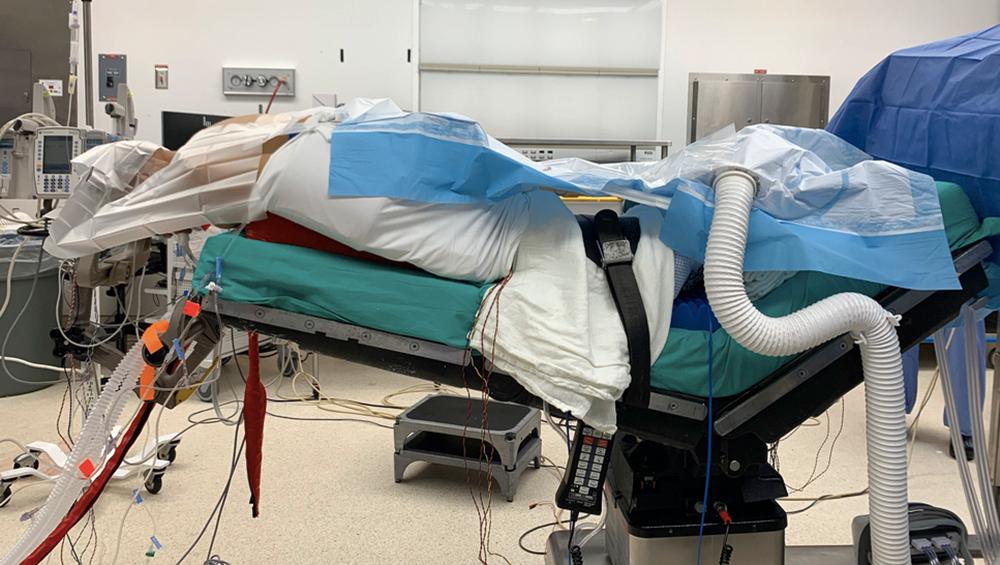Physical Address
304 North Cardinal St.
Dorchester Center, MA 02124
Cervical spondylosis with resultant neural compression is the most common cause of spinal cord dysfunction in adults.
Compression and dynamic forces on the spine contribute to spinal cord dysfunction in cervical spondylotic myelopathy.
Posterior approaches to the cervical spine afford an effective means of decompression.
Careful understanding of the posterior cervical anatomy is paramount.
Patient selection for posterior cervical decompressive procedures is critical because iatrogenic instability or misalignment may occur.
Neurological compression in the cervical spine can manifest as radiculopathy, myelopathy, or a combination of the two. Cervical myelopathy involves compression of the spinal cord itself, often resulting in gait imbalance, dexterity issues, or pain. Radiculopathy that occurs in the cervical spine is a result of compression of one or more nerve roots, frequently presenting as pain, numbness, tingling or weakness, in a given dermatonal distribution. Cervical spondylosis, facet arthropathy, and ligament hypertrophy are a few common pathologies that result in cervical spinal cord or nerve root compression. Cervical spondylotic myelopathy (CSM) and radiculopathy are common causes of spinal cord dysfunction in adults and can be treated with decompressive surgery once conservative modalities are exhausted. ,
When compared with myelopathy, cervical radiculopathy demonstrates a less deleterious natural history; however, patients with refractory symptoms benefit from surgical intervention. The vast majority of patients presenting with radiculopathy will experience resolution of their symptoms with conservative modalities. Such modalities include physical therapy, nonsteroidal antiinflammatory medications, and epidural steroid injections. Progression of compressive myelopathy can have much more serious consequences. This progression often occurs in a stepwise fashion, with large functional declines followed by a prolonged period of stability. Caused by reduction in total cervical canal volume, myelopathy is the result of direct neurological compression and dynamic forces on the spinal cord during head motion. By reducing the volume of the canal, the blood flow to the spinal cord itself is restricted. When the narrowed canal is then further compromised by dynamic forces, momentarily causing further decrease in canal volume, the consequences are potentially severe.
A number of surgical interventions are available to address compressive pathology, including anterior, posterior, or a combined approach. The goal of any surgery in the setting of myelopathy or radiculopathy is decompression of the affected neural structure; thus, any approach that can adequately address this need should be considered. Laminectomy alone for decompression of the spinal cord or nerve roots has been demonstrated to be effective in the treatment of cervical myelopathy and radiculopathy. However, it does not address dynamic forces, and postoperative instability is a concern, (i.e., postlaminectomy kyphosis). Many patients do well with this strategy, but careful patient selection is necessary for a safe and effective outcome.
Posterolateral foraminotomy for the treatment of cervical radiculopathy has a long-proven record of successful outcomes. It has been described as a relatively simple technique and an effective means of decompressing multilevel nerve root compression. Additionally, as no fusion is performed, there is no risk of pseudoarthrosis or hardware-related complications.
As with all surgical options for the treatment of CSM, there are a number of potential limitations when posterior cervical laminectomy alone is used. The most discussed risk is that of delayed postlaminectomy kyphosis. This is largely secondary to the loss of the posterior tension band. Reports of the incidence of postlaminectomy kyphosis vary in the literature. The rate of clinically relevant, as opposed to radiographically identified, postlaminectomy kyphosis is suspected to fall between 5% and 10%. Asthagiri et al. described cervical laminectomy for tumor resection in a younger patient population with reasonable results and a low requirement for delayed stabilization. Patients that are potentially suitable for laminectomy alone include those with multilevel stenosis and reasonable lordosis, elderly patients with poor bone quality and severe disease that would not tolerate the morbidity of a more complex procedure, and those with the prevalence of a large degree of ankylosis resulting in the presence of fusion before surgery. These indications are predominately anecdotal, as isolated laminectomy has fallen out of favor in most patients secondary to the excellent results seen with laminoplasty and posterior cervical decompression and fusion.
The vast majority of posterior cervical surgeries are done in the prone position. This holds true for both posterior foraminotomy and laminectomy surgery. Other options not as frequently used include sitting and lateral decubitus. For prone surgery, a multitude of tables can be used. The authors’ preference is a standard electric table with chest rolls and a Mayfield head holder ( Fig. 105.1 ). Once the Mayfield head holder is applied, the patient is then carefully rolled prone, and the head holder is attached to the operative table. Neutral to slightly flexed positioning ensures adequate room for surgical dissection. Once the head is positioned appropriately, the table is placed in moderate reverse Trendelenburg, and the patient’s knees are bent to avoid migration of the patient on the table.

Occasionally, for isolated one level posterior foraminotomy surgery, a head pillow is used. In similar fashion, the patient is rolled prone onto a regular electric table with chest rolls in place; however, instead of utilization of a Mayfield head holder, a typical prone head pillow is used. This technique limits the morbidity of pin sites in the head, and in instances of one-/two-level surgery, easy exposure, and no requirement of fusion, this is often an excellent option.
Become a Clinical Tree membership for Full access and enjoy Unlimited articles
If you are a member. Log in here